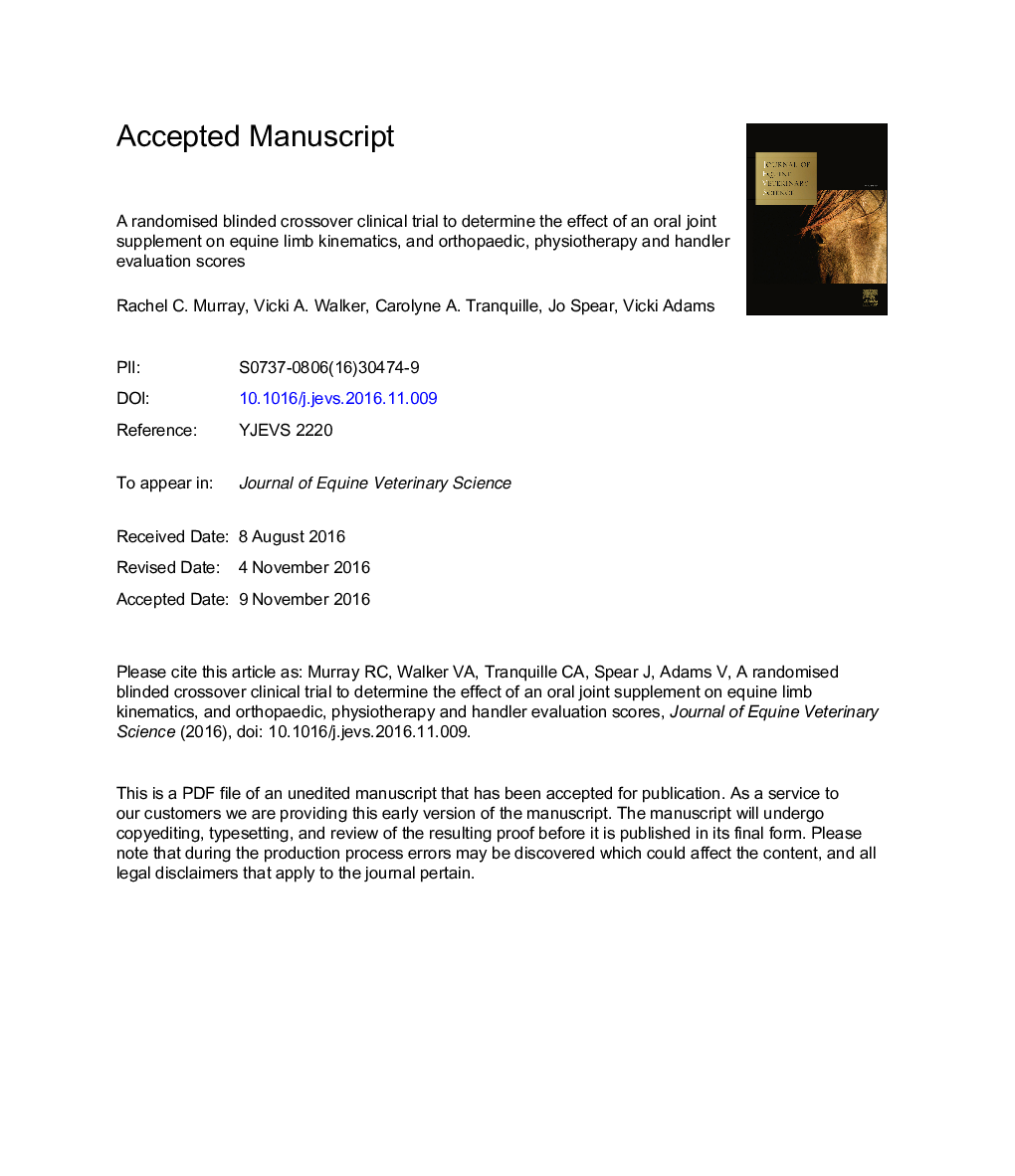| کد مقاله | کد نشریه | سال انتشار | مقاله انگلیسی | نسخه تمام متن |
|---|---|---|---|---|
| 5535563 | 1551550 | 2017 | 30 صفحه PDF | دانلود رایگان |
عنوان انگلیسی مقاله ISI
A Randomized Blinded Crossover Clinical Trial to Determine the Effect of an Oral Joint Supplement on Equine Limb Kinematics, Orthopedic, Physiotherapy, and Handler Evaluation Scores
دانلود مقاله + سفارش ترجمه
دانلود مقاله ISI انگلیسی
رایگان برای ایرانیان
موضوعات مرتبط
علوم زیستی و بیوفناوری
علوم کشاورزی و بیولوژیک
علوم دامی و جانورشناسی
پیش نمایش صفحه اول مقاله

چکیده انگلیسی
Despite the range of oral joint supplements available, there has been very limited research into their efficacy. The study aimed to determine the effect of an oral joint supplement on limb kinematics, orthopedic, physiotherapy, and handler evaluation in horses. Supplement S or placebo P was fed to 24 horses for 21Â days each in a random order. Horses were evaluated at days 0 (baseline), 21 (after first treatment), and 42 (after second treatment). Assessments included the following: clinical orthopedic evaluation for straight line/lunging circle in walk and trot; high-speed motion capture determined hindlimb kinematics for straight-line trotting; grading of limb range of motion (ROM) and muscle tone based on standardized physiotherapy criteria; handler grading of specific criteria during pasture, groundwork, and ridden exercise. Effect of treatment, sequence, limb, and interactions were investigated using linear-mixed models. S was associated with significantly lower lameness grade in a straight line (P = .001) and circle (P = .010), with individual horses improving up to 2/10 grades over P/baseline. S was associated with significantly improved ROM and muscle tone. Ridden/groundwork scores were significantly higher with S compared to P/baseline. With S, horses were graded significantly higher for “ease of movement” at pasture compared with P/baseline. For horses with hindlimb lameness, S was associated with significantly greater tarsal flexion than baseline (4.2% greater, P < .020) or P (2.7% greater, P < .037). S was associated with less lameness and improved physiotherapy scores, ridden/groundwork scores, and pasture “ease of movement.” Increased midstance tarsal flexion of lame limbs may indicate improved mobility/comfort during peak loading, supporting a positive effect of S.
ناشر
Database: Elsevier - ScienceDirect (ساینس دایرکت)
Journal: Journal of Equine Veterinary Science - Volume 50, March 2017, Pages 121-128
Journal: Journal of Equine Veterinary Science - Volume 50, March 2017, Pages 121-128
نویسندگان
Rachel C. Murray, Vicki A. Walker, Carolyne A. Tranquille, Jo Spear, Vicki Adams,